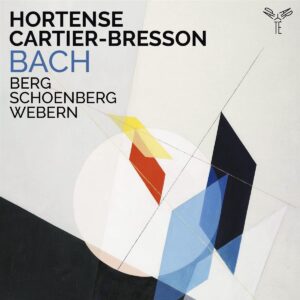Interspersing Bach Toccatas and works by Schoenberg, Berg, and Webern proves more interesting as an idea than an actual program. Granted, the E minor Toccata’s compact note-spinning and the dark, necromantic sound world of Schoenberg’s Three Pieces Op. 11 work well back-to-back. Yet even if the F-sharp minor Toccata’s imitative writing mirrors similar techniques in the Berg Sonata’s development section, Berg’s brooding aura would benefit more from a different Bach work in front–perhaps the C-sharp minor or B-flat minor Prelude and Fugue from the Well-Tempered Clavier Book I. And to follow the powerful D minor Toccata with a conclusion such as Webern’s delicately exposed Variations Op. 27 is nothing less than box-office poison.
With this in mind, it’s best to judge Hortense Cartier-Bresson’s interpretations as separate, unrelated entities. She ideally projects all of Schoenberg’s dynamic levels and foreground/background perspectives, although the music can stand more subjective latitude than Cartier-Bresson is willing to cede; perhaps I’m still spoiled by Di Wu’s impetuous and overtly dramatic Op. 11 performance from the 2009 Van Cliburn Competition (available to stream or download). On the other hand, the Berg Sonata’s exposition needs to slow up and settle down. Cartier-Bresson scrupulously attends to each detail of accent and phrasing throughout the Webern work. What’s missing is the note-to-note timbral diversity and characterization we hear from Piotr Anderszewski, Krystian Zimerman, and Peter Serkin.
However, the Bach Toccatas best exemplify the sensitivity and cultivation that impressed me about this pianist’s earlier Aparté release, a wonderful all late-Brahms recital. In particular, her varied articulations and deft balancing of each fugue’s textural strands render these movements with more shape and meaning than usual. However one feels about Cartier-Bresson’s program building, she offers much fine playing here, albeit not on the special order of her Brahms.
































